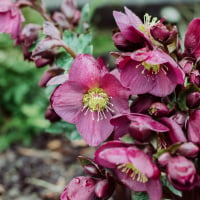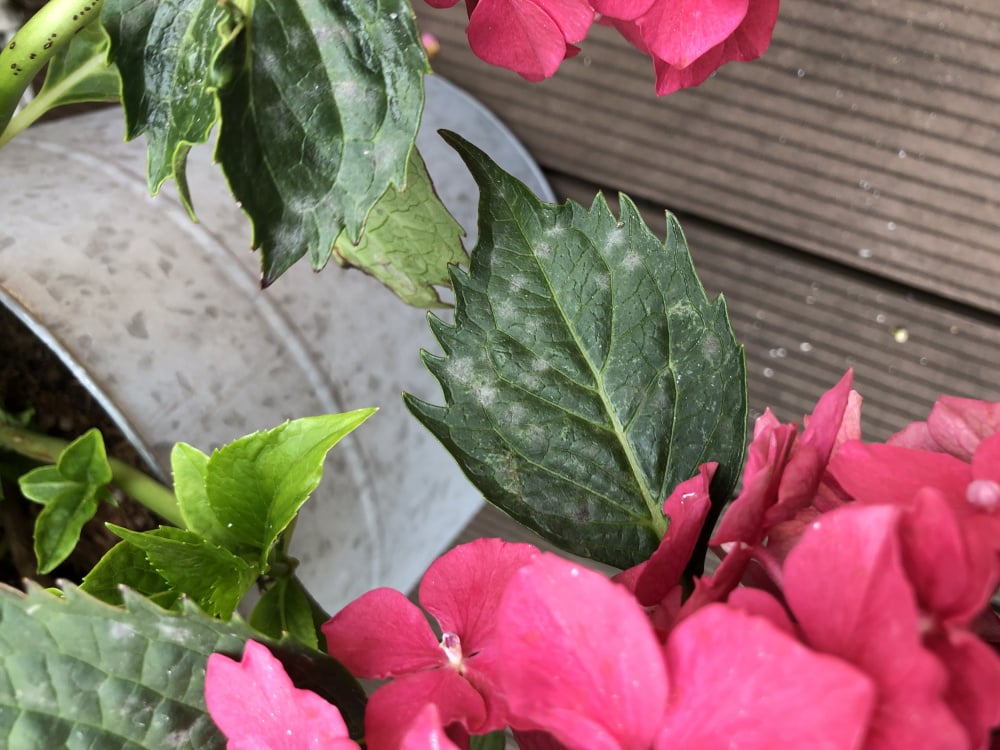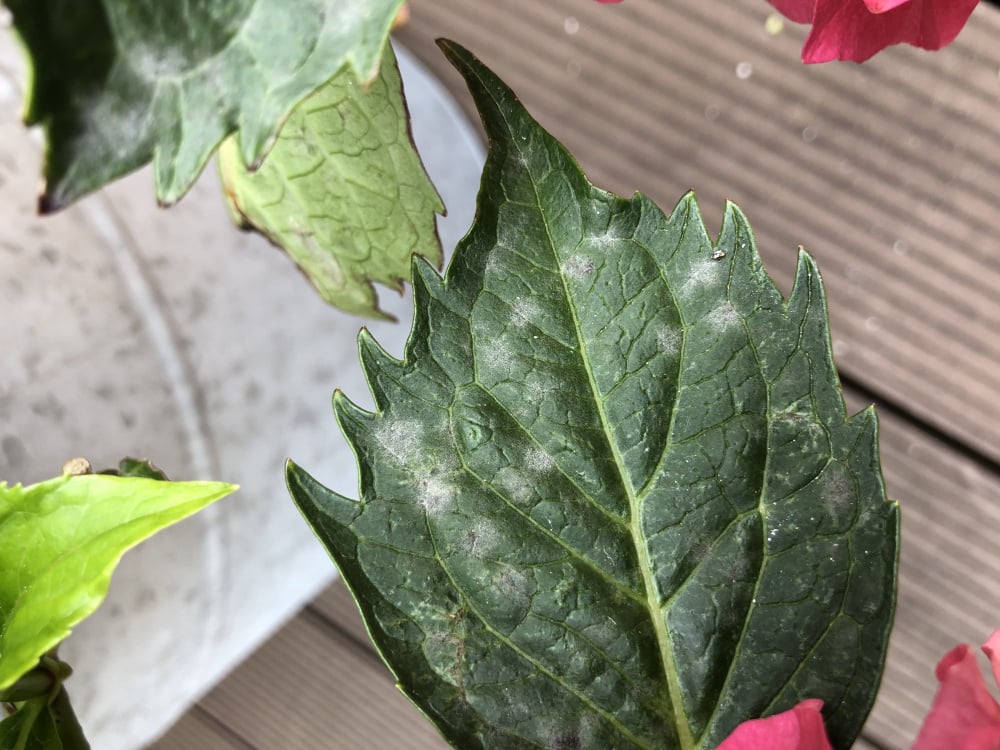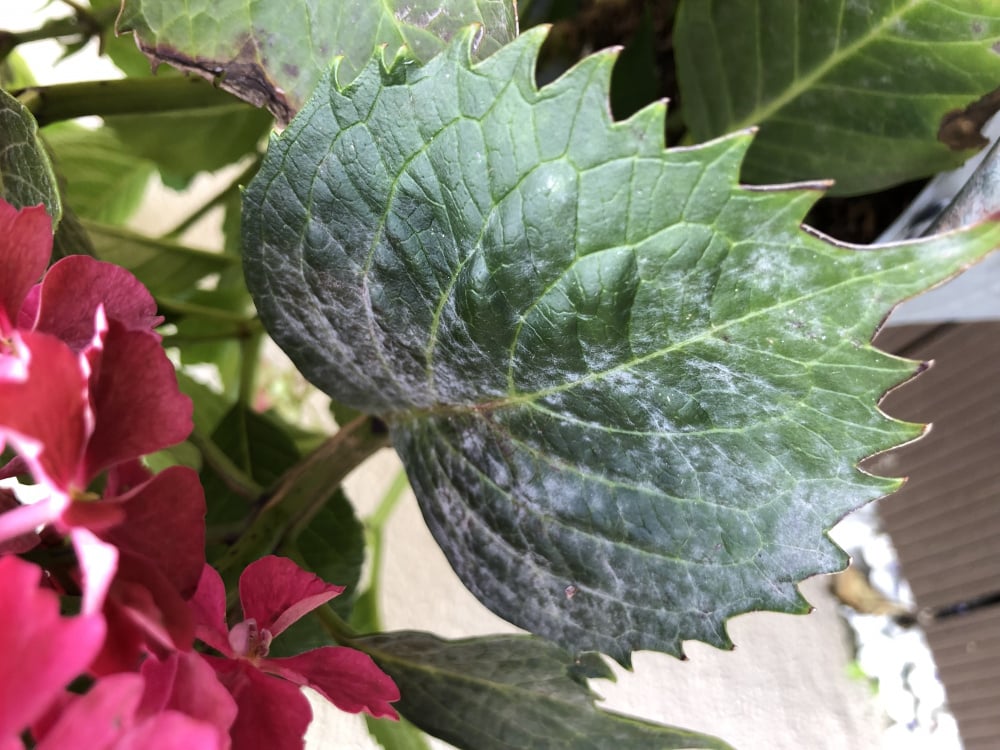This Forum will close on Wednesday 27 March, 2024. Please refer to the announcement on the Discussions page for further detail.
New gardener woes
 The_old_presbytery
Posts: 20
The_old_presbytery
Posts: 20
We've just bought our first house and I was so excited to start gardening, but I feel all I do is trouble shoot. We planted roses that gave a burst of heavy blooms and then stopped flowering and are now covered in aphids, Angelonia that became home to caterpillar eggs, nasturtium that are covered in black fly, lobelia and lavender that both developed mould and died, Erysimum BM that mysteriously stopped flowering and now our new hydrangea has mould on the leaves (see photos). Oh and we think we have box blight too. I'm certain I will be told 'it's just nature', but it's still a bit disheartening.
Unusually, we have had so much rain this year and I'm sure everything has been over watered.
Anyway, can anyone tell me what this might be on our hydrangea leaves and if anything can be done?
Thanks in advance.



Unusually, we have had so much rain this year and I'm sure everything has been over watered.
Anyway, can anyone tell me what this might be on our hydrangea leaves and if anything can be done?
Thanks in advance.



0
Posts
Nasturtiums attract black fly. Some vegetable growers use them as sacrificial plants to attract the pests away from their crops. You need to be vigilant at rubbing them off. They start off under the leaves and that's where you need to look to keep on top of it .
It sounds like you need to look at the watering of your plants. Are they in the ground or in pots?
For every success there are always one or two problems, and some years can feel more of a struggle than others.
I agree that the hydrangea looks like it's suffering from powdery mildew, they are always a bit tricky in pots as they need a lot of water, and an occasional feed now and again can help (l use seaweed feed).
Which variety of roses are you growing? Did you deadhead after the first flush of blooms ?
It's possible that they are stressed, hence the aphid invasion , roses are greedy feeders.
Also did you deadhead the Erysimum? Bowles Mauve can literally flower itself to death.
Don't despair, we've all been there.
Just to add re the roses. There are some that only have one flush of flowers. If you have ones that should repeat flower, then as AnniD says, important to deadhead and then feed/water. With the aphids, using physical means of removal (squashing them, rubbing them off, blasting with hose) are better as you don't then kill the good guys like ladybirds and their larvae.
Good luck.
Roses attract aphids quite readily, and squirting them off with a hose, or wiping with your hand takes care of most of them if you don't have birds visiting enough. Ditto for the nasturtiums. If you've recently planted the roses, they'll take a bit of time to establish too. Even a mature plant [of any kind] needs some time to settle in, so they can be a bit vulnerable in the early stages, after planting.
In many areas, especially further south, box blight is common. You may have to re think having it. Many folk have taken box out and replaced with an alternative as it's often more trouble than it's worth to try getting rid of it, and nurse the hedges back to health.
I live in west central Scotland - not where that photo is...
It definitely feels like we're having more problems than success at the moment.
We're container gardening because we want to wait until we've been in the house a year before we plant in the ground. We want to see what happens in the garden over the seasons and what grows. We're also experimenting by trial and error. So everything is in pots.
We planted after the last frost in April and then immediately had almost two weeks of non-stop heavy rain. We've also just had about 10 days of the same. We're in Europe, very close to where the floods were.
We deadheaded the roses and I removed some of the spent wooden stems from the Erysimum. I'm afraid we didn't know what variety of roses we were buying. A shameful error in hindsight. Perhaps we need to try harder to tackle the aphids, but there are just hundreds of them every day.
Is there anything I should be doing to remedy the mildew?
There is also a fashion for hydrangeas being forced [into flowering] for the Easter market too, and then if they get put outside suddenly, they struggle, as they get a bit of transplant shock going from cossetted conditions out into the big wide world, and at a colder time of year. If that's when you got your hydrangea, it'll have been set back by weather. They wouldn't normally start flowering until late July and into August
I live in west central Scotland - not where that photo is...
Gardening is all about experimentation. You will get slugs, caterpillars, and other pests. Plant what grows. If you have aphids, make a lady bug 🐞 house, or just hose them off.
It may not be box blight, do you have your box in pots, or are there pets and children around that could be damaging the stems?
In containers, you will need to get used to making compost mixtures to suit your plants. Shrubs will normally need a loam-based compost, whilst some plants require quick draining soils, which you may need to add perlite or grit to the compost. Then there is the issue of watering and when to water. Placement of your pots, like partial sun, or full shade.